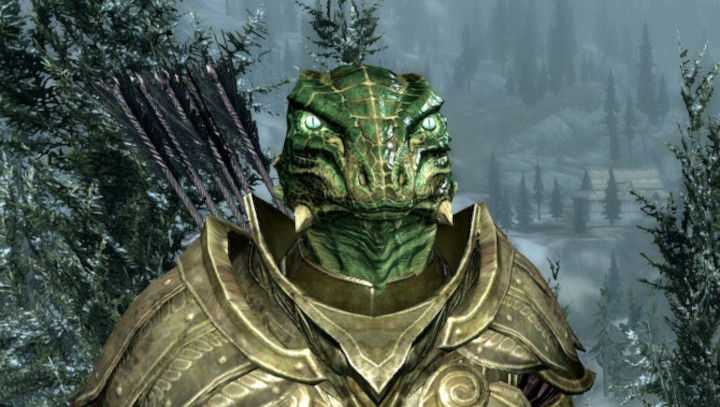Bethesda games tend to be playgrounds for roleplayers. Whether you try to play these games as a sci-fi/fantasy version of yourself or try to create the most absurd character possible, you have no shortage of options. These games have hundreds of hours of content with deep systems of lore, but at the same time, they leave enough room for you to create your own place in their worlds.
I want to introduce you to four characters created in Skyrim and Fallout. Two of them are mine, and two belong to friends of mine. So let’s begin with…
Kermit the Argonian (Lucas)
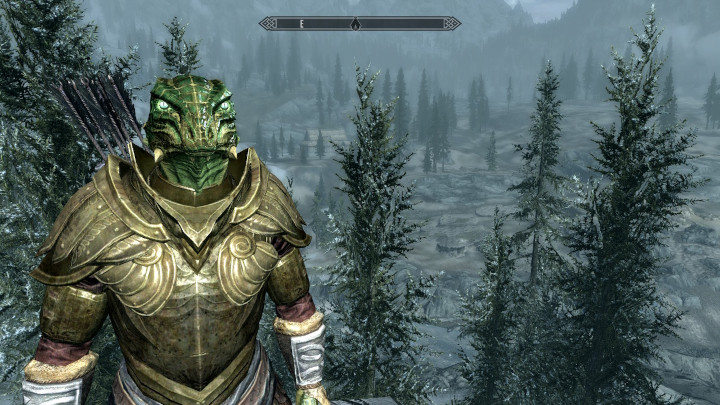
By the time I got The Elder Scrolls V: Skyrim on Nintendo Switch, I’d already played through the game several times, and I was pretty familiar what each major questline generally brings, even though some of the details are blurry. At this point, playing Skyrim as “me” didn’t really feel honest anymore.
Enter Kermit the Argonian.
During this playthrough, I created Kermit as both a character and an experiment. I like to create specific rulesets for myself within the games I play. For example, I was a Halo teenager, so I played on Legendary with all skulls on. (To be fair, Legendary on Halo 1 and 2 is harder than Legendary with all skulls on in Halo 3, Halo 3:ODST, and Halo: Reach.) Kermit grew out of this rule-based mindset.
With Kermit the Argonian, I decided:
- I play as if Kermit the Frog was sort of dropped into Skyrim as an Argonian. I imagine that Kermit the Frog is a pretty lawful-good character, and is friendly in general. He will talk to anyone and help anyone who asks, so long as he deems it a noble pursuit. He probably wouldn’t join the Thieves’ Guild or the Dark Brotherhood.
- I don’t have a backstory for how Kermit the Frog ended up in Skyrim in the first place. I think it’s really funny how many random strangers will interact with Kermit and trust him to carry out tasks for them. I imagine Kermit as constantly flabbergasted as he’s asked to do countless quests for strangers.
- I try to make the world as real as possible. I decided to add some extra rules to my playthrough. No map. No quest log. I almost did the “ultra realism mode” in which you don’t have anything on your HUD, but that was a bit too difficult. Instead, I look at the menu only to turn quest markers off whenever a quest marker appears.
Challenging myself to this extent created some problems. Without a quest log, I have no way of knowing what I’m supposed to be doing on any of these quests besides what I’m told when the quest is updated (cue the two drum notes and the “quest updated” text). However, none of that is really all that helpful when you don’t know the Ya’arborghvan caves they’re referring to and they do not repeat the quest objective they told you.
Though that didn’t really stop me in the beginning. Instead, that was part of the character. “The lost amulet? Sure, I’ll help you find it. Where did you say it was? Talos be with you too. And the amulet? Yes, you’ve mentioned the Talos thing already. Can you remind me about this amulet? No? Okay. I guess I’m on my own.”
One cool thing about how Skyrim works is that you actually can follow NPCs to the objective they say they’re going to. If you don’t fast travel there, they will absolutely just walk the entire way there.
Overall, RPing as Kermit — trying to interact with the world while pretending it’s not a video game — is a pretty fun way to play Skyrim. You can think about the game world as presented by Bethesda as a magic circle (I’m not the first to describe a virtual world as such). In one sense, I’m stepping outside the magic circle by abandoning some of the mechanics the game is offering me. In another sense, I’m entering further into the magic circle by interacting with it in a way that’s more realistic to me. And in a third sense, I’m creating my own magic circle by imagining my own mythos for this character and how they view the world.
But by no means did I invent the idea of RPing in Skyrim, and I’m certainly not the first to create my own lore in my head. I’ve certainly been inspired by friends who have used roleplaying to spice up the game and make it their own as well. So I asked my friends a few questions about the characters they made and the elements they added in their own heads.
Salt the Wildbringer (Kory)
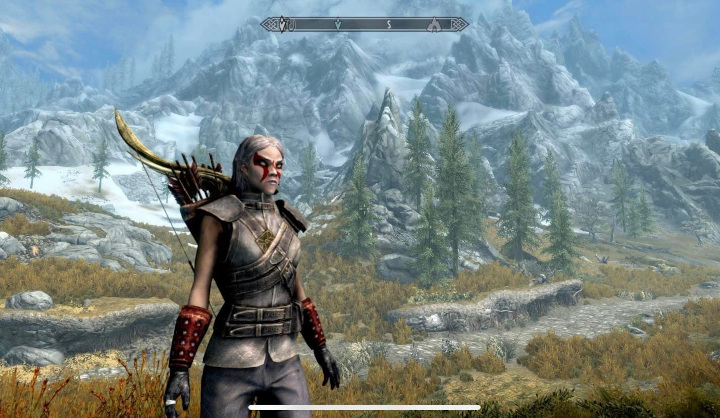
Introduce us to Salt the Wildbringer. What are some of their character traits? These can be anything from the basics like skill specialties, weapon types, and followers to some of the more complicated elements, like political stances, religious orientation, and morals?
Salt the Wildbringer is a chaotic wood elf. She is a stealth-based character that primarily uses a bow, and she uses one-handed and conjuration secondary. She’s a raging lesbian. As a result, her followers are predominantly Mer warrior women with the exception of Faendel. She is biased against humans for the way they spread through the land, taking down wilderness in their path.
Early in RPing, I determined that one day Salt was called by a deity she claimed to be the spirit of the wilderness, to be its champion. She would do anything to gather power in order to bring about her final goal: the ultimate defeat of civil society. She does the will of Daedra, knowing they bring about powerful rewards, and anything she believes will help her gain more skill.
When you play as Salt the Wildbringer, what aspects of the character were reactive to things in the game? How does Salt feel about the civil war? The dragon invasion? Being Dovakin? Feel free to expand on how Salt feels about any of the major plot points of the game.
The character is always reacting to situations, but a lot of it is in my head. There aren’t a ton of ways to express yourself in Skyrim. Disapproval doesn’t look like words and body language; it could be an arrow to the knee.
For a long time Salt ignored the war, since it was a matter of society, not for the champion of the wild. As the quests dwindled, the idea of getting involved got more appealing. I rationalized it through Salt’s desire for power. Salt wants power and hates humans, so she chose to side with the imperials (a powerful nation) who are puppeteered by the high elves. She also joined to spite the racists of the Stormcloaks who dislike Mer. The dragons were a sign that she would fulfill her role of championing the wild and that her cause was just.
One fun aspect of Skyrim is being able to choose how you respond in conversation and in quests. How does Salt typically act in conversation? In quests?
Salt is snarky, but ultimately pretty compliant. I make the conversation up out loud to myself. The dialogue options in Skyrim still leave much to be desired. It often leads to either furthering the quest or not.
You incorporated things like respawning as part of the lore, with the idea that Salt senses something could be wrong that killed the character in a past run. Do you want to speak on that a bit?
Part of the power Salt received from the Wild was the ability to never truly die. When she dies, that reality is over and Salt continues from another timeline in which she is unconsciously guided to do things differently than the version of her that died. It’s like Salt is a culmination of all of her selves, which is why the version you play can go on forever.
You had also mentioned that Salt is polyamorous with several characters in Skyrim. Want to summarize the main points of the polycule of Salt’s love life? How do you swing polyamory in the game? Are you allowed to marry multiple people or do you consider non-wedded followers part of the polycule as well?
It’s a bit muddy, to be honest. Salt’s wife is Jenassa; they journeyed together for a long time early on. Eola’s flame atronach and Salt’s were in love, and each steward had a relationship with Jenassa. In the game, it’s all just made up in your head. I recall some of it came from silly things like the atronachs glitching through one another. Or maybe they just look cute next to each other. Nothing explicit, just imagination.
Skyrim doesn’t allow multiple marriages.
Why did you decide to cosplay Salt the Wildbringer? How did fans of your cosplay react to it?
I thought it would be fun to act like them a bit, as well as maybe design something cuter than what Skyrim usually allows in character creation. The fans liked the outfit, but largely didn’t know the character.
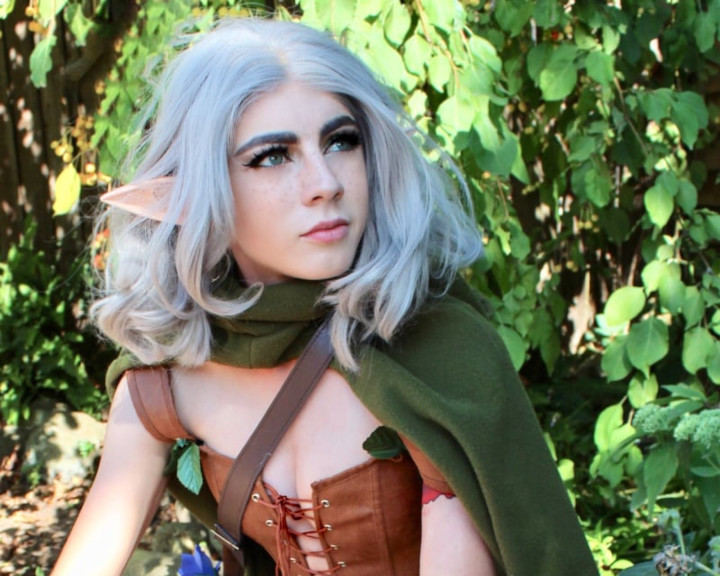
You brought the cosplay to the Renaissance Fair as well. How did it feel to embody Salt in a live-action fantasy medieval setting? How did people respond to it IRL?
It’s an amazing feeling. I felt like I was on top of my game, much like Salt is in Skyrim. People compliment my outfit a lot, and I’ve also gotten into character talking to strangers when they’ve put on their own characters too.
I’ve touched quite a bit on what the game tells you vs. what you decide is part of the lore. Here’s another topic to explore: How much do you relate to Salt yourself? Do you think of Salt as very much aligned with your moral and political compass, or do you separate yourself from Salt?
Salt and I don’t have much in common. We both like warrior women, and we both like nature, but I can’t say there’s much after that. Oh, and I want to be an elf. It’s just fun to pretend to be more chaotic than I can be in my everyday life I think.
Cowdad (Ian)
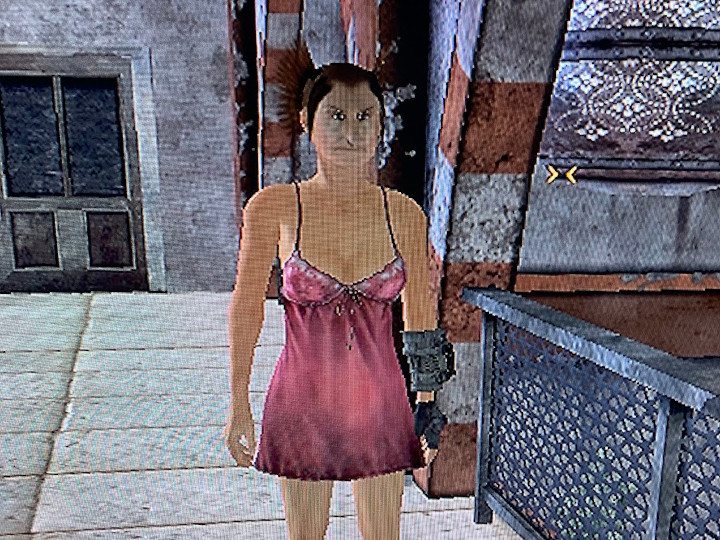
You have a few characters in Skyrim and in Fallout, but your first OC that comes to mind for me is Cowdad from Fallout: New Vegas. Can you introduce us? What are some of this character’s traits — from the basics like skill specialties, weapon types, and followers, to some more complicated elements, like political stances, religious orientation, and morals?
Cowdad’s ethos is largely centered around anti-human sentiment, and he tends to side more with animals and machines when possible.
As far as I can tell, Cowdad is generally an absurd character. Do you relate at all to the character, or do you mostly just think of the character as weird for weird’s sake? Or is there another dynamic to the character that I’m missing?
The absurdity mostly exists for the purpose of stretching the in-game universe to its limits of what is physically and socially possible, and creating absurd scenarios.
I know you like to use games for absurdity at times. Particularly your quest to “collect the skulls.” Can you share a bit about that?
“Collect the skulls” comes from a lyric from the band Nile, which a high-school friend of mine was listening to (ironically) while we were playing Skyrim. We realized that the lead singer was telling us to collect skulls. It became an inside joke from there, and it’s just an absurdly specific thing to do as the kind of inherently absurd character of the Dragonborn. If the Dragonborn can become nobility in every city in the region, the leader of a every powerful organization in that region, travel to the afterlife and back, and singlehandedly decide the outcome of a civil war, why wouldn’t they do something dumb like collecting every skull they find?
Most video-game protagonists are absurd, whether it’s absurd in power/importance or if they just do an absurd number of things. It seems kind of impossible to create a game where the player has the freedom to do all sorts of things while also making the player character feel like a realistic portrayal of a person.
Can I link the original “Collect the Skulls” song? What’s the name of that one?
It’s “Sacrifice Unto Sebek” by Nile.
Getting back to Cowdad, how does Cowdad generally respond to major plot points? How does Cowdad respond in conversation?
New Vegas rewards using speech and other skills to successfully make your way through conversations, but Cowdad preferred violence, reserving kindness for animals and machines/robots.
Do you have any added aspects to Cowdad’s lore or personality that the game doesn’t tell you about explicitly?
To be honest, Cowdad doesn’t have much backstory. The violence thing eventually became too much, so I created a new character named Cowmom, who likes to talk her way through everything.
Do you have any pictures of Cowdad?
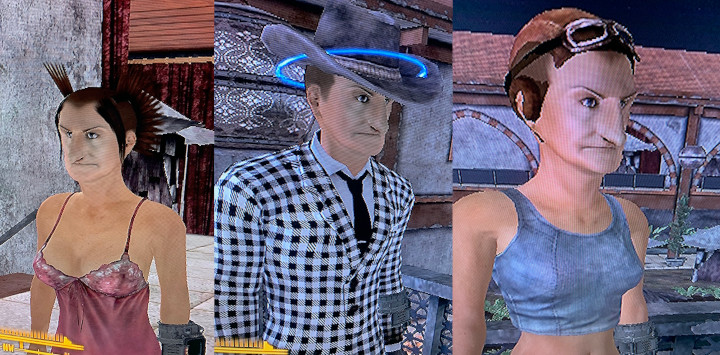
Drugz (Lucas)
Another character of mine that’s worth mentioning is Drugz from Fallout 4. I won’t go much into detail, as I never got very far into the game on this one, but you can probably guess Drugz’s main character trait: He likes drugs.
I thought the drug aspect of Fallout 4 was really interesting, and I wanted to see what it was like to make a character around it. As it turns out, it’s really hard. I checked my stats when Drugz wasn’t on drugs, and a bunch of stats were negatively impacted like 5,000%. Yeah, I should have seen that coming, but I really did think I could feasibly play the game like that. I never really knew Fallout well enough to work around those issues. There are always more drugs, but in this case, it felt like there were never enough.
Conclusion
I haven’t been playing much of either Kermit the Argonian or Drugz as of late. I probably won’t go back to Drugz. I bet there is a way to play with a character who takes drugs all the time and doesn’t get their addictions cured, but I couldn’t get it to work. I also never owned Fallout 4 (I played it on Kory’s PS4 when we were housemates).
Kermit, though, I’m sure I’ll revisit. Playing without the quest log is quite the challenge, but I also don’t mind wandering around Skyrim trying to follow quests and getting lost in the process, though maybe I do need some more grounding to be able to follow it a bit better. I thought about using a physical map and writing down quest objectives in an actual journal.
I told my friend Zach about this idea, and he asked: “Why not just use the quest log and the map in the game?”
It’s a fair point, I guess.
However, I do think the physical map would help me immerse myself in this character and this style of playing. It’s one thing to have a physical map, but it’s an entirely different thing to simply press the map button and astral project into a 3D rendering of the world that has a GPS waypoint, beacons, and the ability to teleport. Kermit wouldn’t have any of those things. Even though I’d be writing down the same stuff that the quest log tells me anyway, I also think it’d be sort of fun to physically write all of that, like a waiter or a journalist.
In any case, I do really admire Bethesda for giving players so much creative freedom within the worlds they build. I think all of the characters I’ve talked about here are fleshed out by the imaginations of the people playing them, which exists outside of the things the games specifically tell you. Salt’s sense of past lives isn’t made explicit by the game, and my own reactions to characters in Skyrim are based on what I think Kermit the Argonian would do rather than what the game is trying to get me to do.
But while it takes imagination to flesh out characters in this way, few games give you the kind of opportunities that naturally exist within Bethesda’s games.
